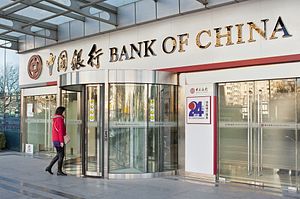Last Friday, China’s central bank announced that the ceiling on bank deposit interest rates would be removed the following day. This move was expected to take place sometime this year or next year if economic conditions allowed. The removal of deposit rate restrictions marks a milestone in the trajectory of financial reform, paving the way for further financial marketization and enhanced funding opportunities.
The action by the central bank ends a long period of restricted interest rates. Even though the People’s Bank of China has stated that it will closely monitor interest rates, this is an important step toward allowing banks’ interest rates to reflect market conditions. In China, banks play a central role in the financial sector, and liberalization of interest rates in the banking sector will improve market signals in other financial subsectors, including the nascent corporate bond market and the curb market. Removal of deposit rate restrictions will also improve banks’ capacity to compete with the shadow banking sector, which offers somewhat higher returns on wealth management products.
Removal of the deposit rate ceiling, coupled with benchmark interest rate cuts and reductions in the required reserve ratio, boosted Asian stock markets to some extent. While analysts have pointed out that current economic conditions are unlikely to create vicious competition among banks for deposits or to improve liquidity conditions, this may change in the medium run, as banks’ profit margins improve and growth is renewed. Improving the climate for competition in the banking sector may allow other banks to break through the oligopoly imposed by the Big Four commercial banks.
China’s financial leadership has gradually but methodically worked to reform the financial sector, even in the face of substantial, risky innovations taking place in the shadow banking industry. Additional reforms will require such large feats as liberalizing the exchange rate and the capital account. Liberalizing banks’ interest rates is central to these processes since market forces will be required to stabilize capital inflows under a fluctuating exchange rate. Full exchange rate and capital account liberalization is unlikely to occur, although the further China moves away from state control in the financial market, the more necessary it is to increase forces that counterbalance external stimuli.
China’s state financial machinery turns slowly but surely, although some worry that the reform process may be too slow to induce a resurgence in economic growth. A tectonic shift is required in many sectors to expose alternative sources of growth. At this point in time, uncertainty has given rise to bearish sentiments in China, and it is hoped that more direction will be instilled as the 13th Five-Year Plan is laid out for the period of 2016 to 2020.
Still, one issue that the removal of deposit rate ceilings laid to rest is the fact that China is committed to an ongoing path of reform, especially in the financial sector. We predict that as uncertainty declines and growth picks up, a more competitive financial sector will fuel the flames of presumably new growth engines toward the end of this decade.

































